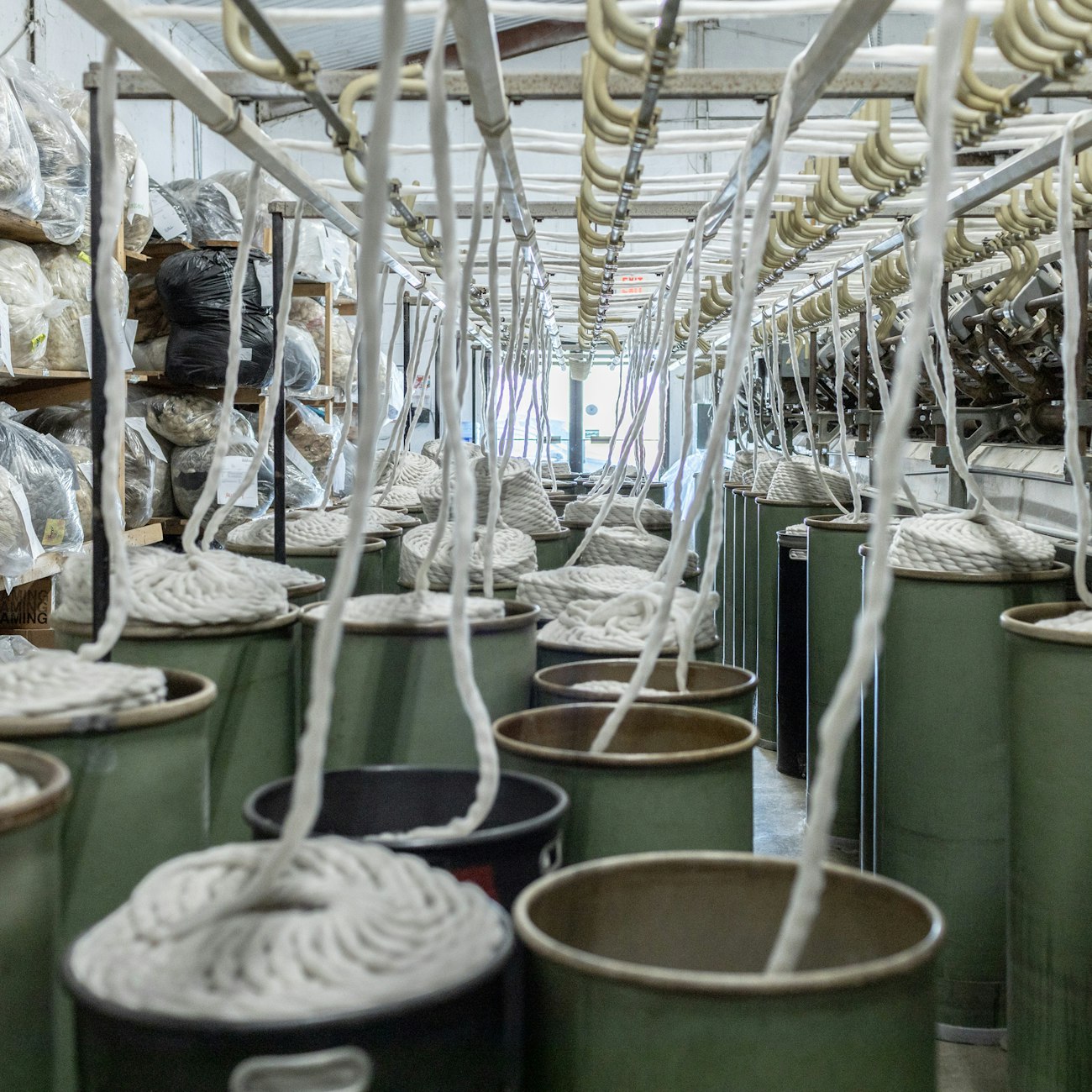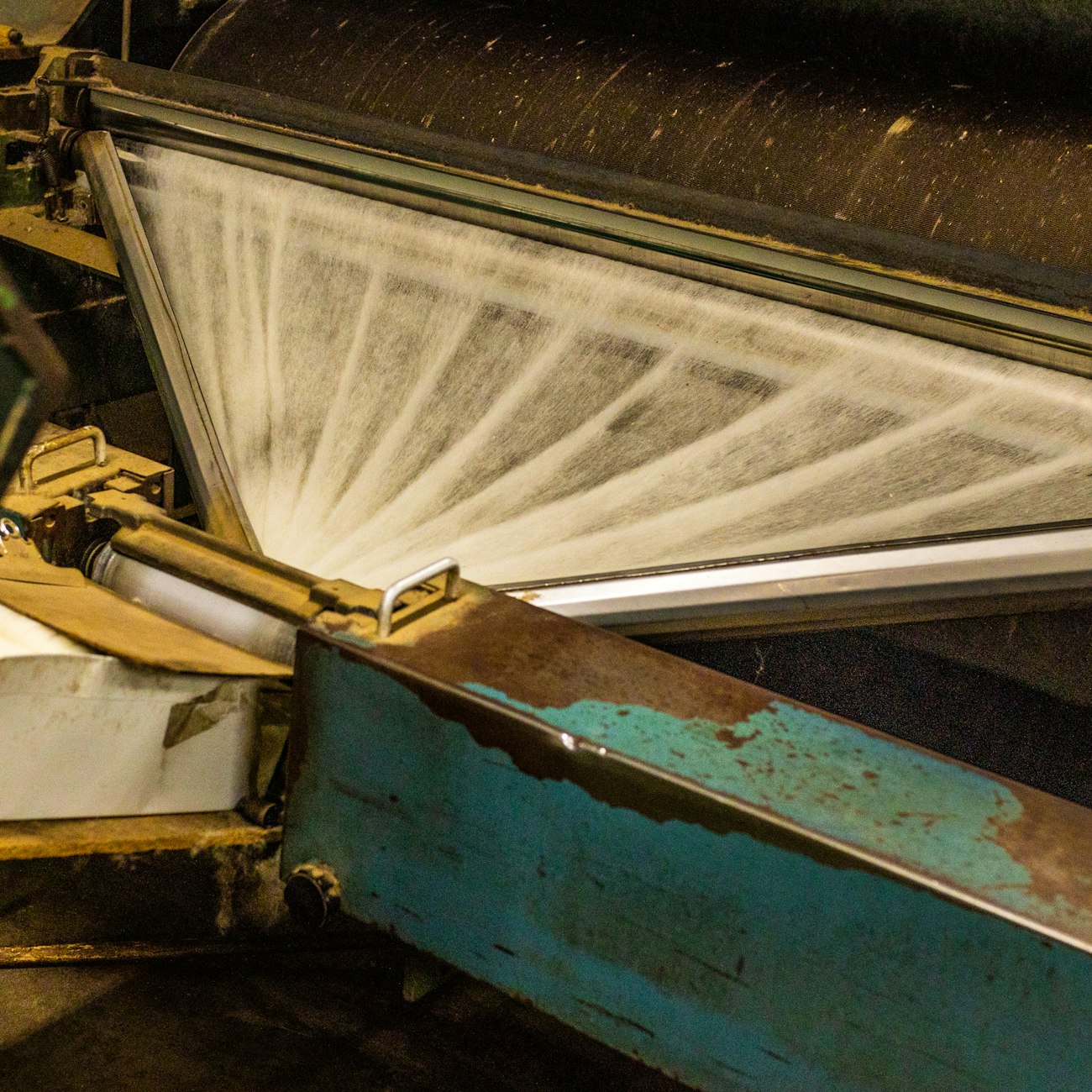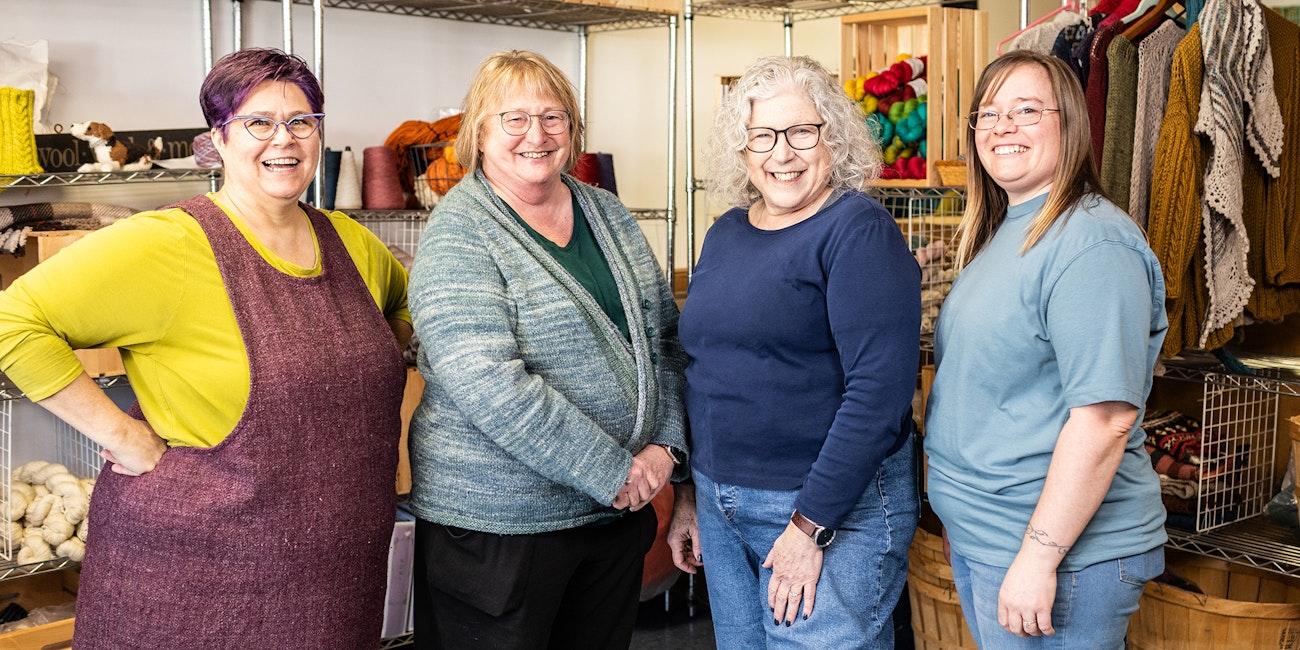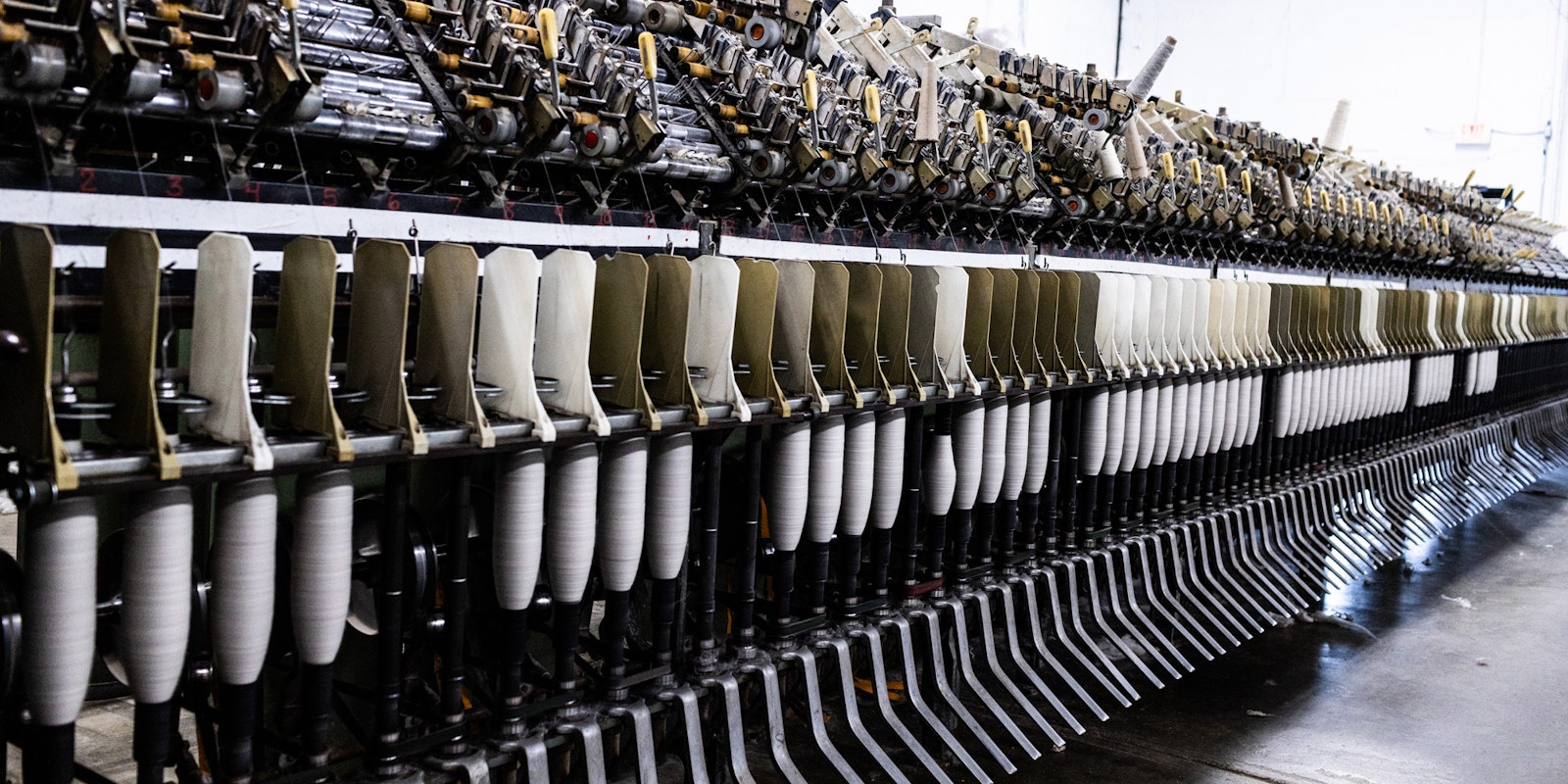During the New York Sheep and Wool Festival, you’ll find Battenkill Fibers in a tent between yarn vendors and a sheep barn, selling yarn and collecting fiber to take back to the mill. On most days of the year, though, you can find them in a light industrial area of Greenwich, New York, between a tractor dealer and a self-storage facility. (And that’s pronounced “green-witch,” not “grenn-itch” like the posh Manhattan neighborhood.) Mary Jeanne Packer, the mill’s founder, and her colleagues may be as proud of their 2015 Washington County Small Business of the Year Award as their collaboration with Isabella Rossellini to transform the wool of her Mama Farm into yarn.
Yarn Partners
Battenkill Fibers Carding and Spinning Mill washes and processes fiber (mostly wool) into roving, as little as one fleece at a time, and yarn, with a minimum order of 10 pounds. When she started the mill, Mary Jeanne committed to returning their own fiber to each farmer, which allows shepherds who take excellent care of their wool to charge a premium and tell their product’s story to customers. The mill sometimes purchases wool outright, either to produce their own yarn or use in a fiber blend for a larger company.
 At left, a wall of shelves holds wool coming in to be processed. At center, bins of pindrafted roving wait to be pulled onto the spinning frame at right.
At left, a wall of shelves holds wool coming in to be processed. At center, bins of pindrafted roving wait to be pulled onto the spinning frame at right.
Walking through the doors, you see a wall of shelves stacked high with bags of fiber, separated by customer, waiting for their turn to pass through the hands of employees at about a dozen stations. In Episode 3 of The Yarn Chronicles: Small-Batch Yarn, Big Impact, Battenkill Fibers partner Angie Bennett gives a behind-the-scenes tour, walking through the mill and explaining each station and machine: Hand-picking, then a machine that further opens up the locks. A machine that fluffs up the fiber to make it easier to card. A giant carder, about 8 feet wide, with various toothy rollers that converts the loose fiber into a gossamer-fine blanket. And on and on through the process from raw fleece to beautiful yarn.
Although wool yarn is the mill’s bread and butter, they work with other fibers as well, usually in blends. Weaver Lilly Marsh especially loves the wool/hemp that Battenkill Fibers makes for her, with the mill’s in-house dye studio bringing out tweedy effects in the protein/cellulose blend. Alpaca, mohair, and even the wool from dairy sheep find their way through the giant carder and into skeins or cones of yarn.
 Wool leaves the giant carding machine of Battenkill Fibers Carding and Spinning Mill in a wide, translucent sheet.
Wool leaves the giant carding machine of Battenkill Fibers Carding and Spinning Mill in a wide, translucent sheet.
The Ripple Effects of a Small Business
It’s plain to see how important cleaning, carding, spinning, and plying are in the fiber landscape. What you might not see when holding a skein of gorgeous small-batch yarn is how the mill fits into the rural economic landscape. In the small town of Greenwich, Battenkill Fibers employs 18 full-time and part-time workers, and their contribution doesn’t stop there. The mill is intertwined with the local economy; for example, that tractor supply shop next door supplies parts when the vintage mill equipment needs a little work.
Mary Jeanne is also a founder of the Hudson Valley Textile Project (HVTP), a collaboration that promotes regional fiber producers and connects New York State’s legendary textile and fashion industries with natural fiber cultivators in the region. The Yarn Chronicles takes viewers on a tour of a HVTP initiative: Clean Fleece, a small-scale scouring facility. Clean Fleece washes batches of wool too large for Battenkill and too small for the last remaining American scouring facilities, which have a minimum weight of 1,000 pounds—far more than a small farm could harvest in years.
Following the thread from farm to delightful small-batch yarn in knitters’ hands, the role of the mill and its effect on the fiber economy might not be the first ones that come to mind. Away from the eyes of most knitters, a skilled mill converts the hard work of a fiber farmer into the yarn dreams of the crafter.
Whether watching the coils of pindrafted roving collect gently in a bin or following the rhythm of the spinning and plying frames moving up and down as yarn winds onto rows of bobbins, the process of making yarn is mesmerizing to watch. Check out Episode 3 of The Yarn Chronicles to see it for yourself.
 Weaver Lilly Weaver, farmer Carol Foster, and mill partners Mary Jeanne Packer and Angela Bennett are just four of the small business owners brought together by regional small-batch wool.
Weaver Lilly Weaver, farmer Carol Foster, and mill partners Mary Jeanne Packer and Angela Bennett are just four of the small business owners brought together by regional small-batch wool.
Hear Mary Jeanne Packer on the Long Thread Podcast and catch a special episode just for Farm & Fiber Knits subscribers in the Library.

